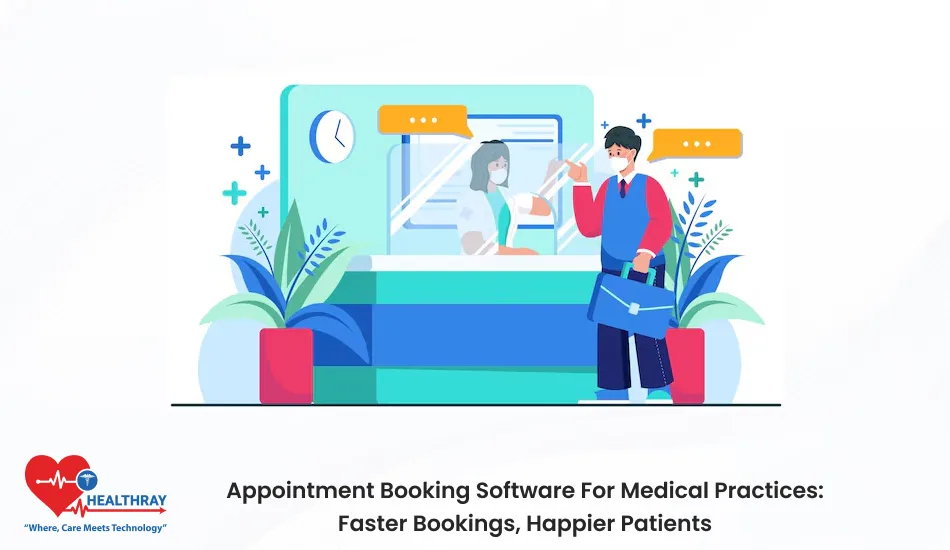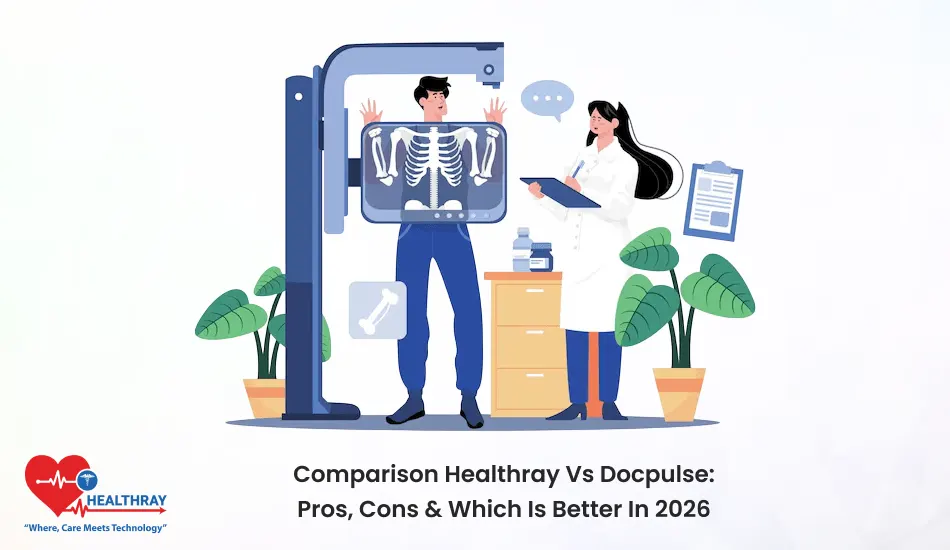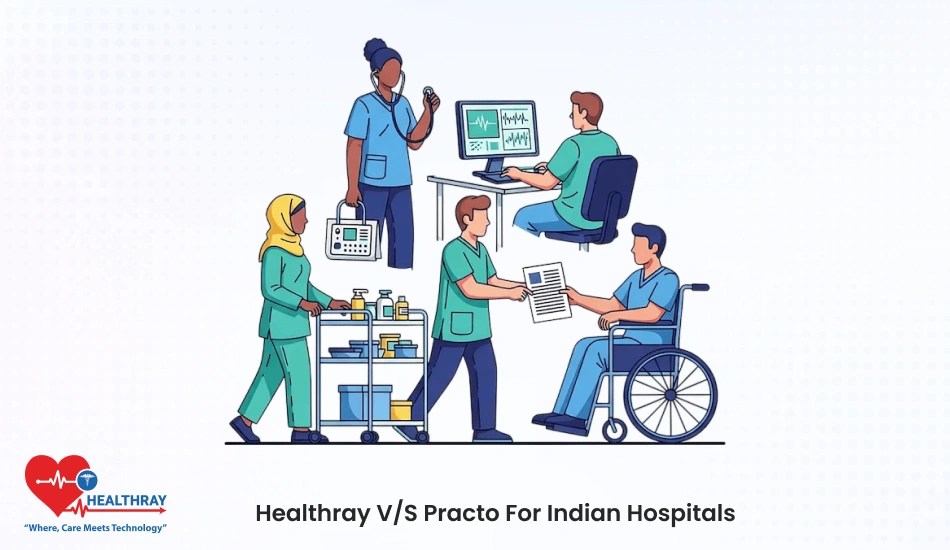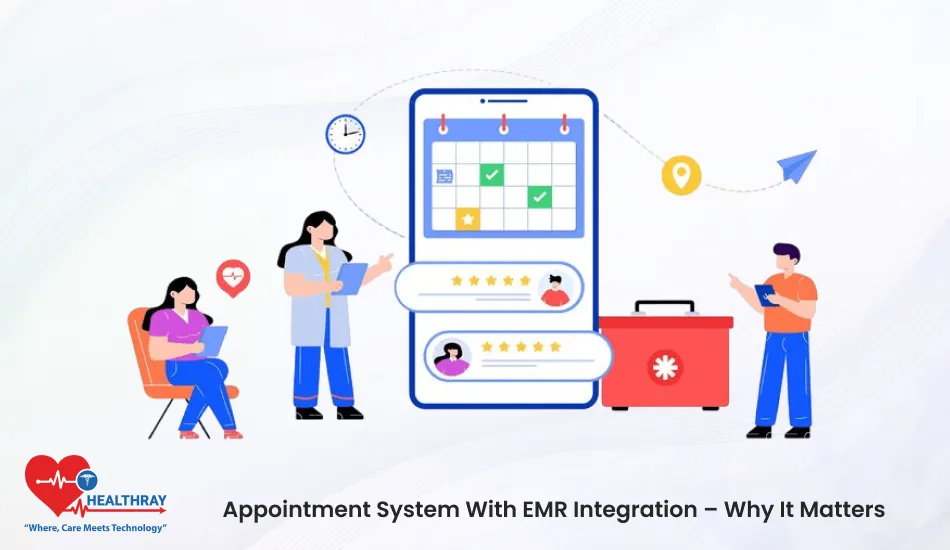Summary
Understanding the difference between EMR and EHR is essential for hospitals and clinics who want efficient patient centered care. EMR stores records within a single facility, while EHR allows records to be shared across multiple providers. A correctly chosen system will improve workflow, patient interaction, and the use of capabilities such as AI and digital health records.
Introduction
In today’s fast-paced healthcare world, the terms EMR and EHR get tossed around like hot potatoes. But do hospitals really know the difference? Let’s be honest, this is not just a techie debate. Understanding the differences between EMR and EHR can affect patient care, efficiency and even staff sanity.
Just visualise EMR software as the private diary of your clinic, containing painstaking notes on your patients, which you keep in a drawer. In the meantime, EHR functions more like a health passport, moving seamlessly from hospitals to labs and specialists to provide everyone a complete picture.
Hospitals that confuse the two – risk wasted time, duplicate tests and dissatisfied patients. The good news? Figuring out the difference is easier than it seems, particularly when you focus on sharing, access and overall functionality of your digital health records.
In this article, we will unpack the differences to help hospitals decide the best choice for them. By the end, you will clearly understand why selecting the right system is not just about technology, but directly impacts care, workflow, and even patient satisfaction.
What is EMR?
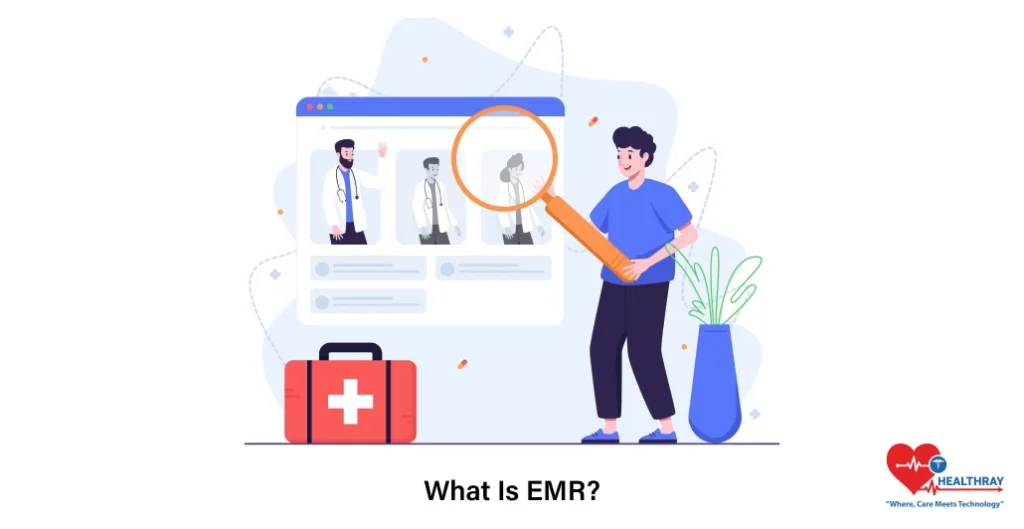
EMR refers to an Electronic Medical Record, one component of contemporary digital health records. Basically, EMR software stores information about a patient, including medical history, diagnoses, prescriptions, and lab reports, within a single healthcare facility.
It enables medical practitioners to enter, monitor, and modify patient information more quickly, resulting in significant time savings and a substantial reduction in paperwork. It also improves accuracy because EMR software allows easy access to and input of medical notes, prescriptions, and test results instantaneously.
But EMRs are built for use in a single hospital or clinic, and data sharing outside the premises is minimal. For example, if a patient is treated at another hospital, his or her EMR data does not automatically follow. That’s where EHR comes in – but we’ll get to that soon. For now, remember this: EMR helps one healthcare organisation electronically store and manage its own patient records.
What is EHR?
Now that you know what EMR is, let’s speak about its smarter cousin, EHR, or Electronic Health Record. In contrast to EMR software, EHR systems can transmit data among different hospitals, clinics, laboratories, and pharmacies. To put it simply, an EHR provides clinicians with a real-time, connected, holistic view of a patient’s medical history.
EHR software also enables physicians to work together, share findings, coordinate treatment across institutions and networks of care. It also gives patients access to their digital health records, prescriptions and the ability to make appointments or check test results online. For this reason, among others, EHRs greatly help communication, eliminate redundant testing, and improve quality of care overall.
Why the Confusion?
The confusion between EMR and EHR persists among hospitals, as both are forms of electronic medical records software that contain patient data. The EMRs were implemented first, doing simple record keeping for one clinic. EHRs later grew to enable shared information between hospitals and systems.
Adding to the confusion, both terms were often used interchangeably by government programs and software vendors. The difference between EMR and EHR matters today more than ever. This is because EHRs have largely taken over due to better connectivity, improved patient outcomes, future integration with AI and wearable health technologies.
Difference Between EMR and EHR: Head-to-Head Comparison

Let’s break down the difference between EMR and EHR so you can see how each system works in real healthcare.
Scope of Use
When we talk about EMR and EHR, the first difference lies in their scope of use and accessibility. Often, EMR software is created for a single hospital or clinic, tracking only inpatient data at the local facility.
But EHRs are used across different hospitals, clinics, and laboratories and allow data to flow seamlessly. For this reason, one future perspective for digital health records is EHR systems, which promote better communication and coordination among healthcare providers.
Data Sharing
Another significant difference between EMR and EHR is the ease with which data can be shared with other healthcare providers. Standard electronic medical records software usually stores this information within a single organisation and is not accessible outside it.
In contrast, EHR enable secure sharing across various systems while maintaining data integrity and continuity of care. In addition, EHR systems support the use of AI in electronic medical records, flagging trends, patterns, and possible health concerns automatically on a shared platform.
Patient Access
The difference between EMR and EHR grows even clearer when it comes to patient access. Typically, EMR medical solutions are accessible only to doctors and staff at a single clinic. It is not easy for patients to see this data themselves.
But EHRs allow patients to access their records at any time via secure portals, checking their test results, prescriptions, and medical histories. This helps build more trust and better patient engagement with their own digital health information.
Data Portability
In addition, another fundamental difference between EMR and EHR is data portability. EMR data usually isn’t transferred if you switch hospitals. With EHR, your complete medical history can follow you, and your doctors can immediately access your records when they log in to the electronic software on different systems.
In addition, AI-based electronic medical records improve information transfer by automatically indicating which items are being entered as new but should be merged with existing records, and which appear to be duplicates.
Collaboration
The true strength of the EHR system is its collaborative capabilities. EMR medical solutions are primarily designed for use by a single doctor or department at a time and restrict collaboration.
In contrast, the EHR enables multiple specialists to collaborate and access the same information about a patient. This cooperativeness helps improve diagnostic accuracy, expedite treatment, and avoid duplicate work.
Interoperability
Interoperability – the ability of connected systems to communicate seamlessly and share information – is another major difference between EMR and EHR. EMR software typically does not offer this type of support, instead storing data in a single location.
Meanwhile, EHR platforms are designed for seamless data exchange, allowing hospitals, labs, and pharmacies to stay in sync. Further, with AI, electronic medical records enhance interoperability, as updates are instantly uploaded to all healthcare entities.
Step towards digital era with our healthcare solution
Revamp your hospital facilities and embrace change for better healthcare management. Ease in managing and organizing large medical datasets leads to effective analysis. Seize the opportunity now!
Data Content
The data that each system contains also distinguishes EMR from EHR in terms of their practical application. EMRs primarily document treatment details, progress notes, and prescriptions from a single provider.
EHRs, in contrast, collect and store lab results, imaging reports, allergies, medications and vital signs from multiple providers. Thus, EHRs provide a more comprehensive and unified perspective on the patient’s digital health records.
Use in Public Health
EMR and EHR serve very different functions in public health programs. EMRs are very effective at managing patient care internally, but they do not export data for research or disease tracking.
Instead, EHR enables population studies, vaccination tracking, and national health registries. However, EMR medical solutions are advancing alongside AI-based electronic medical records that can aid in detecting emergent health patterns in real time.
Regulatory Support
To meet compliance requirements, EMRs and other electronic medical record software are generally designed to do nothing more than maintain basic medical records.
But EHR systems are subject to more stringent national and international standards regarding privacy, data protection, and secure exchanges. This explains the hospital’s preference for EHRs as it implements digital health records, closely following government and insurance mandates.
Future Readiness
EHR is the wave of the future. Though many EMRs have fallen behind the times, newer EHR and EMR software solutions incorporate developing technologies, such as artificial intelligence, mobile applications, and connected medical devices.
AI-infused digital health records help decision-making by identifying patterns and flagging possible health problems earlier. That is why you should make EHR your choice to keep your healthcare facility future-ready.
Difference Between EMR and EHR: Summary Table
| No. | Aspect | EMR (Electronic Medical Record) | EHR (Electronic Health Record) |
| 1 | Scope of Use | EMR software is used within one hospital or clinic only. | EHR connects multiple hospitals, labs, and clinics through digital health records. |
| 2 | Data Sharing | Data in electronic medical records software stays inside one organization. | EHR shares data securely with other providers and systems for coordinated care. |
| 3 | Patient Access | Patients usually cannot access EMR medical solutions directly. | EHR allows patients to log in, view, and manage their own digital health records. |
| 4 | Data Portability | EMR data is hard to move when patients change hospitals. | EHR data transfers easily across healthcare systems using AI-based electronic medical records. |
| 5 | Collaboration | Used mainly by one doctor or small team at a time. | Many doctors can collaborate using shared EHR data for better treatment outcomes. |
| 6 | Interoperability | Limited connectivity; systems rarely “talk” to others. | Built for interoperability; AI-based electronic medical records update data across systems instantly. |
| 7 | Data Content | Focuses on notes, diagnosis, and prescriptions from one provider. | Stores labs, imaging, allergies, medications, and full patient details from multiple providers. |
| 8 | Use in Public Health | EMR medical solutions serve internal patient care needs only. | EHR supports public health tracking, research, and AI-based electronic medical records analytics. |
| 9 | Regulatory Support | Meets only basic record-keeping regulations. | Meets national standards for digital health records privacy and security compliance. |
| 10 | Future Readiness | Becoming outdated due to limited sharing and features. | EHR integrates AI, mobile apps, and connected devices for smarter electronic medical records software. |
Conclusion: Which One to Choose – EMR or EHR?
The best way to choose is to first understand the difference between EMR and EHR. For small clinics or private practices, EMR systems may be a better fit. It helps you record patient visits, prescriptions, and lab reports in your own clinic only. It’s inexpensive, easy, and works for clinics that have no need to export their data.
But if your organisation is part of a large hospital or health network, EHR is the smart investment. It facilitates the sharing of data within and among departments, enabling doctors, labs, and specialists to coordinate care in real time. EHR systems also integrate seamlessly with AI-based electronic medical records and telemedicine platforms. This leads to increased precision, workflow and patient experience. In addition, EHR provides patients with secure access to their own online medical records, promoting a more transparent form of care.
Final Verdict: Knowing the difference between EMR and EHR should make it clear that EHR is the future. It is more expensive upfront, but it enables better data sharing and outcomes that the world has confidence in.


